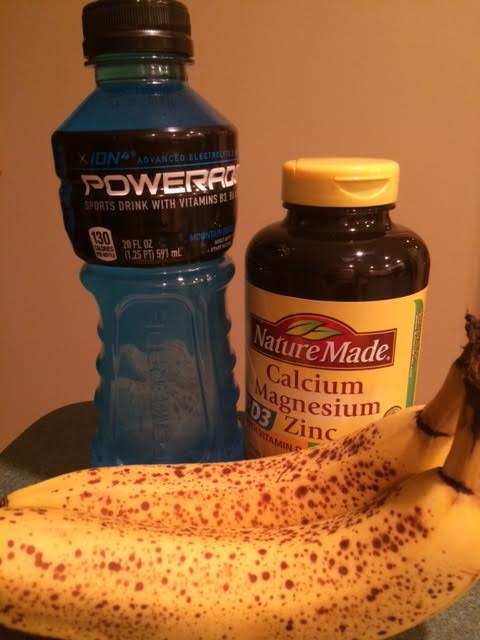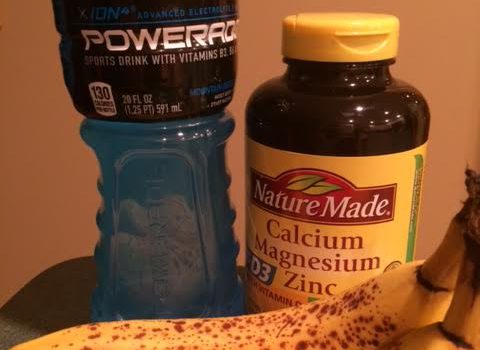Article By: Dale J. Buchberger, PT, DC, CSCS, DACBSP
Last month I discussed a variety of reasons and conditions that may result in muscle cramps in a variety of patients. This month’s article will discuss several options and directions patients can take in order to manage muscle cramps.
Most people think that they need to eat a banana or take a potassium supplement to treat cramps. Others may drink tonic water for the quinine (though the Food and Drug Administration has cautioned against this practice). Then there’s the old wives tale of putting a bar of Ivory soap between the bed sheets as another option. Nonetheless, the first thing that patients need to do in the treatment of cramps is to elicit the primary cause of the muscle cramps. Merely “treating the cramps” is not the same as “treating the cause of the cramps”. If it turns out that the cramps are a result of statin medications for high cholesterol, and you are eating bananas and drinking water, the cramps will not get better. Treatment needs to be directed at the cause whenever possible. See your doctor and have a detailed conversation about your medical history to detect the underlying cause of the muscle cramps.
Dehydration can be caused by either excessive loss of fluids in the body during rigorous activity or the lack of fluid replenishment on a daily basis. If you drink large quantities of beverages that have a diuretic effect (such as coffee, tea, alcohol, or carbonated drinks), you can be dehydrated and suffer from muscle cramps. As a general rule, if you are not drinking at least half your body weight in ounces of water then you are “relatively dehydrated”. Drink fluids that are non-carbonated, caffeine free, and alcohol free. Limit fruit juices, as they are high in simple sugars. Sports drinks should be diluted 50-50 with water. Diluting sports drinks improves absorption, reduces calories and helps your budget! This formula, from the International Sports Medicine Institute, will help calculate your daily water intake: 1/2 ounce per pound of body weight if you’re not active (i.e. eighty ounces a day if you weigh 160 pounds), and 2/3 ounce per pound if you’re athletic (106 ounces a day at 160 pounds).
Teenage endurance athletes should examine their diet for proper mineral intake. After age 15, most endurance athletes should be supplementing their diet with a multivitamin and/or a calcium, magnesium, and zinc supplement. Women over the age of 25 should supplement with calcium, magnesium, and zinc as well. Men and women over the age of 50 should also be supplementing their diet with a multivitamin and additional calcium, magnesium, and zinc. Along with adequate daily hydration, these minerals will reduce muscle cramps associated with poor dietary mineral supply.
Patients that experience muscle cramps secondary to type-2 diabetes need to manage the diabetes and take an active role in treating and reversing the diabetic trend through proper diet and increased activity. An anti-inflammatory diet (high antioxidant foods that are low in sugar and contain healthy fats) with adequate hydration and daily supplementation will assist your medical management and help resolve your muscle cramps as well.
Compression of spinal nerves, seen in conditions such as degenerative spinal stenosis, can cause muscle cramps in your legs when walking or standing for long periods of time. Treatment should be directed towards the spinal stenosis. Reducing irritation at the nerve level through physical therapy, anti-inflammatories, injections, or even spinal decompression surgery will give you the best chance to resolve muscle cramps associated with this particular condition.
Hypothyroidism (low thyroid gland function) has a direct effect on calcium metabolism and will result in generalized muscle cramps. As with diabetes, a combination of medical and dietary management is the best method to treat the disorder and its side effects, including muscle cramps.
Prescription medications continue to be one of the most common causes of muscle cramps in the American population. Medications used for blood pressure, cholesterol, congestive heart failure, or respiratory disorders can cause cramping for different reasons. Statin drugs used to treat high cholesterol can cause a condition known as rhabdomyolysis (rab-doe-myo-lysis), or a breakdown of skeletal muscle causing muscle fibers to be released into the blood stream. This is usually the cause of statin-related cramping. Blood pressure medications increase the excretion of electrolytes such as calcium, potassium, and sodium. Low levels of these electrolytes and minerals can result in muscle cramps. Patients taking these medications should discuss electrolyte loss and muscle breakdown with their prescribing doctor BEFORE self treating or taking any vitamin supplements.
As I mentioned last month, benign muscle cramps generally resolve without treatment in a short period of time. You should consult with a medical professional about your muscle cramps if they cause severe pain that does not resolve in a few minutes; are associated with swelling, redness, or skin changes (erythema); result in prolonged muscle weakness; are frequent; don’t improve with self treatment of ice and stretching exercises; and are not associated with an obvious cause such as a recent bout of intense exercise.


